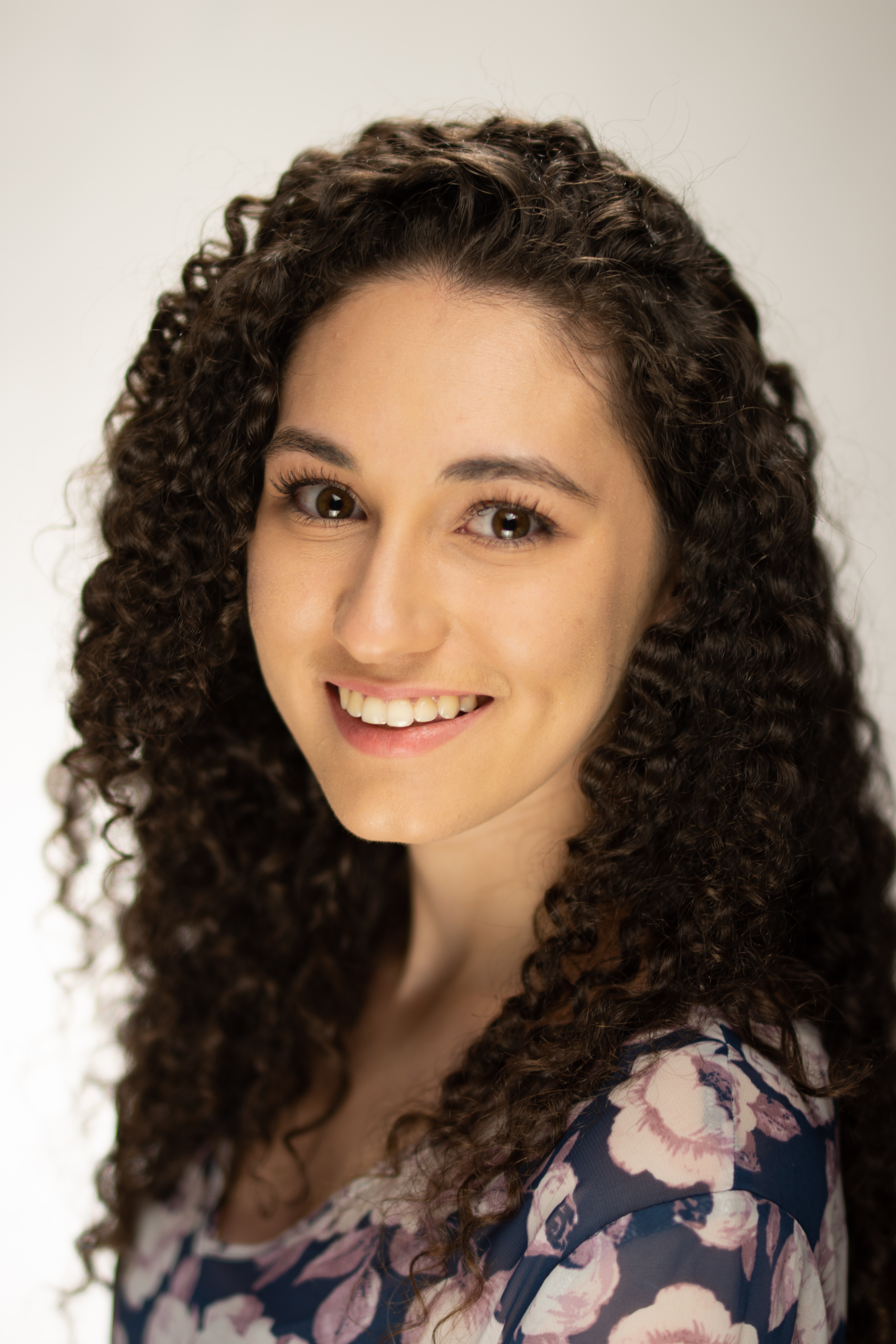Mona Layegh
Area of Doctoral Study: Chemistry
Undergraduate Institute: University of Guilan
Graduate Institute: University of Guilan (M.S. (2012) and Ph.D. (2018))
Research Advisor: Dr. Joseph Bennett and Dr. Zeev Rosenzweig
Description of Research
I am computationally investigating the possibility of fabrication of a specific class of two dimensional materials. These materials are promising candidates in a variety of applications such as energy storage and biomedical.

Kayry Segarra
Area of Doctoral Study: Chemistry
Undergraduate Institute: Stockton University
Research Advisor: William LaCourse, Ph.D.
Description of Research

Leopoldo Posada Escobar
Area of Doctoral Study: Chemistry
Undergraduate Institute: University of Texas, Rio Grande Valley
Research Advisor: Zeev Rosenzweig, Ph.D.
Description of Research
MXenes are a new class of two-dimensional nanomaterials, which are composed of alternating atomic layers of a single or a combination of early transition metals and carbide/nitride in a hexagonal crystal lattice. MXenes have a Mn+1XnTx chemical structure where M= early transition metal, X= C and/or N, Tx= surface terminations, and n= 1-4. The MXene class of nanomaterials have been a prominent research focus since their discovery and some of the compositions exhibit outstanding physiochemical properties, which are comparable or better than other two-dimensional nanomaterials and other classes of materials. As such, MXenes have found use in various applications ranging from supercapacitors in energy storage devices to sensors in biomedical research. My research focuses on the synthesis, surface modification, and characterization of Ti3C2Tx MXene to obtain molecular level understanding of the chemical interactions of the surface-medium interface between MXene and various complex media; as well as biological substrates (i.e., model bacterial organisms like S. oneidensis and B. subtilis). Additionally, my research is focused on developing surface modifications that may help inhibit degradation pathways and improve the physiochemical properties of MXenes in these various media.
Misti Cartwright
Area of Doctoral Study: Chemistry
Undergraduate Institute: University of Tampa
Graduate Institute: Georgetown University
Research Advisor: Aaron Smith, Ph.D.
Description of Research
My research focuses on the post translational modification, arginylation. I will be studying how the enzyme arginyltransferase allows for this modification to occur.

Alexander Paredes
Area of Doctoral Study: Chemistry
Undergraduate Institute: Gettysburg College
Research Advisor: Aaron Smith, Ph.D.
Description of Research
I am working on a novel two-component signal transduction system, BqsS-BqsR, which has been seen to regulate biofilm formation/decay in Pseudomonas aeruginosa through extracellular ferrous iron binding. The deletion of either protein gene in Pseudomonas aeruginosa (Pa)results in a significant increase in biofilm formation. However, neither of these proteins have been structurally characterized, and the molecular-level details of how and to what extent either (or both) proteins interact with Fe2+ remains unknown. In my research, I am exploring the structural characterization, the protein structure, and the metal-binding capabilities of this two component system. I am also working on determining critical residues required for metal acquisition, and once I have determined the critical residues for metal binding and signal transduction, I will make mutations in Pa in order to determine the phenotypes of these mutations, especially the ability of this pathogen to form and/or to dissociate biofilms. With sufficient structural information, I will also test a suite of potential compounds that would be designed to target this specific two-component system, in order to aid in the attenuation of Pa virulence.

Lahari Saha
Area of Doctoral Study: Chemistry
Undergraduate Institute: University of Maryland, Baltimore County
Research Advisor: Chris D. Geddes Ph.D.
Description of Research
My research employs a technique called Fluorophore-Induced Plasmonic Current (FIPC) that uses chromophores found in nature like chlorophyll, beta-carotene, and lutein to convert sunlight into electricity. I have demonstrated this technology with other compounds that are fluorescent for example fluorescein and Texas Red and with inexpensive metals like copper. My goal is to transfer our current understanding to other chromophores and make our system easy to manufacture, inexpensive to buy and maintain, and be able to withstand natural elements. To achieve this, I’ve explored methods such as annealing copper films to generate more current and improve film stability. I significantly increased current responses using gold colloids mixed with the fluorophore solutions. My next steps are to study surface coatings to ensure the longevity of the system and adopt algae for current generation further down the line.

Naba Krishna Das
Area of Doctoral Study: RNA Structural Biology, Biochemistry
Undergraduate Institute: Shahjalal University of Science and Technology (BS)
Graduate Institute: Shahjalal University of Science and Technology (MS)
Graduate Institute: Mississippi State University (MS)
Research Advisor: Deepak P. Koirala, Ph.D.
Description of Research
My research project focuses on elucidating high-resolution structural insights and their interactions with binding proteins of viral RNA domains associated with genome replication and cap-independent translation initiation in positive (+)-sense single-stranded (ss) RNA viruses, using synthetic antibodies to understand their functional roles. My projects involve the synthesis and purification of viral RNA constructs as well as the expression and purification of antibodies, particularly the Fab fragments, which are later used as crystallization chaperones. Additionally, it involves the characterization of Fab-RNA binding using various molecular biology, biochemical, and biophysical techniques, and setting up the crystallization trials. Once Fab-RNA crystals are obtained, diffraction data are collected at a national synchrotron facility, and suitable datasets are used to solve the high-resolution crystal structures. Specifically, I work with Enteroviruses such as Coxsackievirus, Rhinovirus, Poliovirus, and Enterovirus, focusing on domains important for viral replication and translation.
Kushani Mendis
Area of Doctoral Study: Chemistry
Undergraduate Institute: University of Kelaniya
Research Advisor: Zeev Rosenzweig, Ph.D.
Description of Research
Fluorescent Semiconducting Polymer dots for Biological Applications

Hasan Al Banna
Area of Doctoral Study: RNA Structural Biology
Undergraduate Institute: University of Dhaka (BSc & MS)
Graduate Institute: North South University (MPH)
Research Advisor: Deepak Koirala, PhD
Description of Research
My current research area for my PhD program is RNA Structural Biology at the Koirala lab at the University of Maryland, Baltimore County (UMBC). More specifically, my projects aim to elucidate the tertiary structure of some essential RNA elements of clinically important viruses to understand their biological role during infection. In one project, I am working with are called IRES (Internal Ribosome Entry Sites) which are common to many prevalent and infectious RNA viruses, like- coxsackievirus, poliovirus, human rhinovirus, enterovirus 71, etc. High resolution 3D structures of these RNA elements will help us to understand the molecular-level interactions of these RNAs with host proteins and ultimately to develop more effective therapeutics or vaccines. I am developing a novel antibody-based RNA imaging system in live cells in a separate project. While antibody derivatives such as Fabs and scFvs targeting cells and proteins have revolutionized cellular protein and tissue imaging, analogous strategies are unavailable for RNA visualization. Our anti-RNA scFv probes offer enhanced flexibility by enabling the selection of target RNA-specific modules from a library of probes generated through the diversification of CDRs (Complementary Determining Regions). We envision that these innovative tools will open significant avenues for tracking RNA molecules, capturing their folding dynamics, discerning conformational changes, and elucidating their spatial distribution within living cells.

Lucia Rodriguez
Area of Doctoral Study: Biochemistry
Undergraduate Institute: Winthrop University
Research Advisor: Michael F. Summers, Ph.D.
Description of Research
Characterizing the interactions between the HIV-1 Rev response element and the viral proteins Rev and Gag.

Trisha De Jesus
Area of Doctoral Study: Chemistry
Undergraduate Institute: Salisbury University
Research Advisor: Katherine Seley-Radtke, Ph.D.
Description of Research
My research focuses on developing “fleximers” which are nucleoside analogs with a flexible scaffold that splits the purine ring into its imidazole and pyrimidine components through varying connections. These structural changes can aid in the drug design of antiviral therapeutics.

Brandon Fonseca
Area of Doctoral Study: Biochemistry
Undergraduate Institute: University of Maryland, Baltimore County
Research Advisor: Michael Summers, Ph.D.
Description of Research
Investigating the effects of RNA on binding affinity of eIF4E. This is done using various RNA constructs including the truncated 3G 5′-UTR of HIV-1 and selectively labeled 13C constructs with NMR.

Bethel Beyene
Area of Doctoral Study: Chemistry
Undergraduate Institute: University of Maryland, Baltimore County
Research Advisor: Rotating
Description of Research coming soon!

Madison Conte
Area of Doctoral Study: Chemistry
Undergraduate Institute: University of New Haven
Research Advisor: Lisa Kelly, Ph.D.
Description of Research
Reductive Dehalogenation of PFAS Using Photoexcited Napthalene Diimide Radical Anions